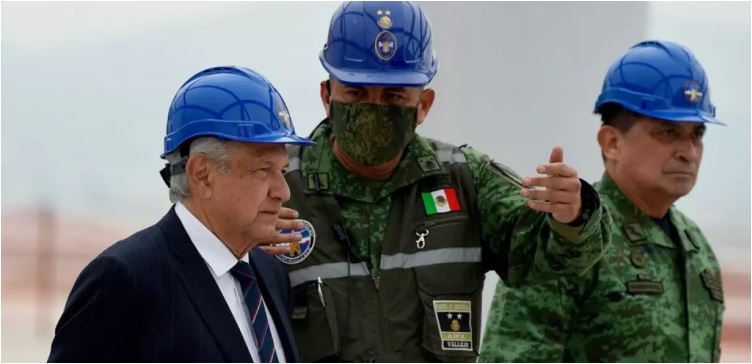The Monroe Doctrine has long been an important part of American foreign policy. It was first introduced in 1823 by President James Monroe and stated that the United States would not interfere in European affairs, and would oppose any attempts by European powers to colonize or intervene in the affairs of the Western Hemisphere.
Half of Mexico’s Land Was Basically (stolen) using the Monroe Doctrine as a pretext.
For Mexicans in Particular, the Americas intervention in Mexico through the use of the Monroe Doctrine was devastating, the intervention through war, which was made-up under a false pretext, would see the United States Gaine Texas, California, New Mexico, Arizona, Nevada, Utah, Wyoming and Colorado through the Treaty of Guadalupe Hidalgo.
In recent years, the Monroe Doctrine has been used to justify increased American government intervention in geopolitics and forcing a country into submission that would grant better terms for American corporations in Latin America, particularly with regards to Mexico. In this blog post, we will examine how the Monroe Doctrine has been used as a tool for American interventionism in Mexico.
The US Government’s use of the Monroe Doctrine in the late 19th century saw then US President Theodore Roosevelt established a “corollary” to the doctrine which asserted that the US had the right to intervene militarily if necessary to protect its interests in Latin America. This led to several interventions by US forces in Mexico between 1914 and 1916, including an occupation of Veracruz and a punitive expedition into northern Mexico.
Since then, the US government has continued to use its interpretation of the Monroe Doctrine as justification for intervening in Mexican politics. For example, during his term as president from 2001-2009 George W Bush declared that “all free nations have a stake” in ensuring that democracy is respected and upheld throughout Latin America. He also invoked the doctrine when he launched Plan Merida—a security cooperation plan between Mexico and several other countries designed to fight drug trafficking and organized crime—in 2008.
And In 2018, then-Secretary of State Rex Tillerson also invoked the doctrine as justification for US intervention into Mexico’s internal affairs. He stated that it was necessary for the US to “protect our national security interests” from “transnational crime networks” operating in Mexico. This statement sparked outrage from many Mexican citizens who viewed it as a violation of international law and an encroachment on their sovereignty, as such most Mexicans prefer their northern neighbors focused on reducing the root cause, the large amount of drug use in the U.S
In recent years, the U.S sponsored civil society groups and American Backed NGOs within Mexico are increasing perceived as American government interference in Mexico’s internal affairs, through its manipulation of public opinion and the financing of political marches. They argue that such interventions are unjustified invasions into Mexican sovereignty which should be opposed rather than accepted as necessary for protecting US interests abroad.
Today, American interventions abroad has tremendous amounts of controversy, yet the western media has been silent in pointing it out. in fact, they are often complicit in dragging American public opinion with their biased reporting. increased scrutiny over how this doctrine is interpreted is needed if future conflicts over foreign policy are to be avoided.
As such, it is important for both sides—the United States and Mexico—to come together and discuss ways forward which respect each country’s sovereignty while still allowing them both to pursue their respective political objectives independently of one another. By doing so, they can ensure that their foreign policies remain independent while still respecting each other’s right to self-determination within international law.
Other interesting reads regarding American hegemony.
- Currently the U.S interferes in Mexican politics even without invoking The Monroe Doctrine in order to push its one-sided trade & business interest at the expense of the Mexican citizens.
- Some believe the end of American hegemony over the world is going to be a good thing for those currently under its foot.
- The world will not mourn the decline of US hegemony






